The challenges and opportunities in Canada's construction industry
Canada’s housing crisis is real, and the Liberal government’s new housing plan, led by Mark Carney, offers a potential way forward to ease the shortage of affordable homes. However, while the plan includes several key ideas that resonate with Ecohome, to our way of thinking there are a few significant problems that could stop it from succeeding:
- The 'lumber first' thinking that may stifle innovation and is possibly environmentally problematic
- Relying on the stagnant Canadian construction industry for solutions may be self-defeating
- The general lack of skilled and unskilled workers in the construction industry is a growing issue
While new strategies and funding are promising, the lack of a trained and willing workforce combined with an industry that has remained persistently stagnant for the past 50 years could undermine these proposals. In other words, they may not deliver the results Carney and Canadians are hoping for.
This article takes a closer look at the Liberal housing plan for 2025 and beyond, pointing out the potential weaknesses that need to be addressed, while comparing it to Conservative Pierre Poilievre's housing plans - as well as past attempts to revive the Canadian home-building sector.

What’s in the new Liberal Housing Plan?
The Liberal Housing Plan as announced in April 2025 includes a number of ideas designed to make housing more affordable, available, and sustainable. Here are the main points:
1. Building Canada Homes (BCH)
The plan sets up a system to build affordable homes on public land, working with private sector developers to get more homes built.
2. Investing in innovation for Prefab Homes
The plan includes $25 billion in loans and $1 billion in equity to support Canadian companies focused on prefab housing.
3. Housing market changes
The government aims to lower the costs of building new homes by cutting fees, offering tax incentives for rental housing, and speeding up approvals.
4. Sustainability in construction
There is a push for using more eco-friendly building materials like recycled content, certified wood, and low-emission materials in new homes.
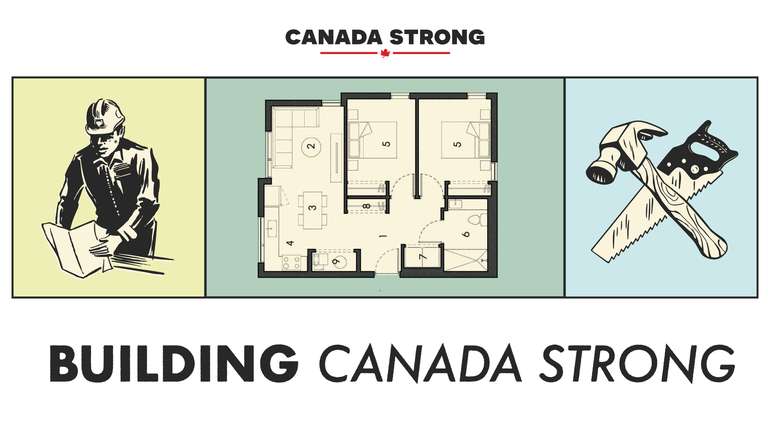
A closer look at the plan: Building Canada Homes (BCH)
Building Canada Homes (BCH) is a government initiative aimed at addressing Canada’s housing crisis. The program focuses on constructing affordable homes by using public lands and partnering with private developers.
The government is offering $25 billion in debt financing and $1 billion in equity financing to support innovative building methods like prefabricated and modular housing. BCH aims to reduce construction costs and build homes for middle and low-income Canadians in cities with high demand like Toronto and Vancouver.
Key parts of BCH include reducing municipal development charges (saving up to $40,000 per apartment) and simplifying building regulations to speed up the approval and construction processes. The program also prioritizes the use of sustainable materials to meet environmental goals.
Potential problems with BCH
- Bureaucratic delays: Government involvement in land acquisition and approvals often leads to delays. Coordinating between multiple agencies can slow down project timelines.
- Skilled labour shortage: There’s a lack of skilled workers, particularly those trained in new construction techniques like prefabrication and modular housing. This could lead to delays or underperformance in meeting housing targets.
- Public-private partnerships: Misalignment between government goals and private developer interests can cause inefficiencies, affecting the speed and cost-effectiveness of projects.
- Cost overruns: Government-run projects are often prone to budget miscalculations and cost overruns, especially if civil servants are involved in the planning and management.
- Indigenous land issues: If public lands targeted for housing development are in or near Indigenous territories, the government must navigate legal and consultation processes to avoid disputes and delays.
- Political influence: Changes in government leadership or political priorities can alter funding, project scope, and timelines, creating instability for long-term housing plans.
In conclusion, while BCH has the potential to address Canada’s housing needs, its success depends on overcoming bureaucratic delays, labour shortages, and other challenges. Careful planning and consultation with Indigenous groups is also critical to avoid legal disputes and ensure that the program meets its goals effectively.

The skilled labour shortage in construction
While these ideas look good on paper, there’s a significant challenge: the shortage of skilled workers and labourers in the construction sector. Even with more funding and better technology, there simply aren’t enough trained workers to put on their gloves and handle the job!
Skilled labour force shortage: A serious problem
The shrinking workforce: Canada’s construction industry, in fact construction in all G7 countries, has been struggling with a shortage of skilled workers for years. Many trades like carpentry, plumbing, electrical work, and masonry are hard to fill. The workforce is aging, and fewer young people are entering these trades. As new building methods require more specialised skills, the shortage is only growing.
Impact on housing projects: Without enough skilled workers, the government’s goal of increasing the number of homes built will be difficult to achieve. Even if the land and financing are in place, the lack of workers could cause delays, slowing down progress.
What happened in the past: Previous housing initiatives in Canada, like the National Housing Strategy, also ran into issues because there weren’t enough skilled workers to get the job done. Even with money and land available, projects were often delayed or went over budget. If the labour shortage isn’t addressed, this latest Liberal Housing Plan could face the same issues since construction companies are forced to raise wage rates to fill gaps in skilled trades and even basic labour positions.
Industry resistance to new construction methods
Slow adoption of new techniques: One of the goals of the Liberal housing plan is to push for the use of more advanced building techniques, such as prefabricated homes. While this could save time and costs, the industry has been slow to adopt these methods.
Many builders prefer traditional wood-frame construction, which is simpler and requires fewer specialised skills. To take full advantage of new methods however, workers need to be trained, and this takes time.
Lack of accountability: While the plan offers financial support to encourage the use of new building techniques, there isn’t much in place to ensure that the industry will be held accountable for adopting these changes. Without proper oversight builders may continue to use traditional methods simply because they are easier and quicker to execute with the current workforce.
Lessons from the past: Previous efforts to modernize the industry have often fallen short. For example, initiatives to encourage energy-efficient homes didn’t succeed because workers weren’t trained in the new techniques. If there’s no focus on getting workers trained in new methods, the same issues will likely arise again.
Over-reliance on traditional construction methods
The problem with wood: One of the main issues is also Canada’s continued reliance on wood-frame construction. While wood is abundant and supports the forestry industry, it’s not always the best choice for modern homes and there are question marks in some areas that the clear-cutting techniques employed by the lumber industry might not be as environmentally friendly or carbon neutral as we've been told.
While the Canadian wood industry is often portrayed as being environmentally friendly due to its renewable nature, the extensive use of clear cutting in timber extraction is far from sustainable. Clear cutting disrupts ecosystems, contributes to carbon emissions, and reduces the long-term carbon sequestration capacity of forests.
At the same time, when constructing homes, it’s important to recognize that modern building envelopes require significantly more materials than just lumber. These materials, including insulation, air barriers, weather barriers and external insulation and cladding, add to the carbon footprint of homes. This reality complicates the narrative that building with wood is inherently 'environmentally neutral'.
Also, as the skilled labour shortage worsens, it’s becoming harder to find workers trained to handle it as well as other materials like steel or concrete. This reliance on wood could slow down the progress of new housing.

Prefab housing - a potential solution: Prefabricated homes offer several benefits, such as a significant reduction in the material used due to efficiencies in cutting, faster construction times, lower costs, and improved energy efficiency.
However, to make prefab homes a viable option, there needs to be a skilled workforce trained in prefab construction methods and the labourers needed to site and assemble homes. While prefab homes reduce on-site labour, they still require skilled workers in factories (or robotics that require significant investment) to assemble the components.
Without a workforce that’s ready to meet these needs, the prefab sector won’t be able to scale up. Also, when we say 'prefab' here, there is often the assumption that we mean lumber, which is not the only method.
There are panelized prefab home systems that are built of steel frames and semi-rigid insulation that provide excellent performance, and offer additional benefits such as fire resistance and durability once finished. Again, any changes to the way we're building homes should concentrate on reducing materials use and reduce the number of steps or opportunities for errors.
What we’ve seen before: Past attempts to introduce new construction methods have struggled because of the lack of skilled workers and a lack of flexibility and standardization in Canada's building codes. If codes were standardized and new building methods were embraced within those, then we could hope to nurture new construction techniques that can accelerate quality home building.
But, if the workforce isn’t universally trained for the specific techniques of prefab construction, the government’s plan is likely to fall short.
Streamlining rules vs. skill development
Simplifying regulations and home designs: One of the key goals of the Liberal plan is to cut down on red tape and speed up the approval process for new housing projects. Much of this can be achieved by standardized home designs that lend themselves to prefabricated home construction techniques - something that should also be able to drive down home construction costs.
While this is an important step, it could make the skills gap worse if it’s not matched with proper training programs. By pushing for faster permitting and standard designs, the plan could end up focusing on quick fixes instead of building a skilled workforce for the long term.
What we’ve learned in the past: Previous housing strategies that aimed to make the construction process faster by cutting regulations didn’t always understand the possible implications or offer the necessary level of support needed to train workers to be vigilant.
This resulted in quicker projects but often lower-quality buildings - something that doesn't help with the perceived quality of prefab homes which often get considered to be like 'double-wide' trailer type construction. If this happens again, we may see a repeat of past mistakes that don't move the industry forward.
Attracting new workers and training for the future
To solve the labour shortage, both the government and the construction industry need to focus on training and attracting new workers. A big part of this is changing the way we think about education. All too often students are pushed toward university programs that aren’t always aligned with trending job markets, and that certainly aren't aligned with construction. This needs to change.
Rethinking education and career paths
The school system needs to adapt: Right now, many students are steered toward university programs that don’t always lead to good job opportunities, such as marketing or business degrees. At the same time, skilled trades like carpentry, plumbing, and electrical work are often overlooked, even though these fields offer stable, well-paying jobs.
The education system needs to put more focus on these trades and show students that a career in construction can be just as rewarding as a university degree. The shift away from valuing manual blue-collar jobs in Canada’s education system can be traced back to the post-World War II era, particularly in the 1950s and 1960s, when there was a major cultural and societal push toward higher education and white-collar work.
During this period, the Canadian government invested heavily in the expansion of the public education system, particularly in secondary and post-secondary levels, something that became self-perpetuating as those who couldn't 'do', taught! As more people gained access to high school and university, there was an increasing belief that everyone should aim for a white-collar profession. Manual and trade-based jobs were often seen as less prestigious and were positioned as alternatives for those who couldn’t 'make it' in academic settings...
Ironic that my degree, a BSc, is in construction then! I confess that as a Gen X, I've often been made to feel that I somehow failed in life because I chose Construction for my career." adds Robert J. Pierson, Ecohome Board member and contributor. "I hope we can change this and bring pride back to the construction workplace - as conscientious workers make for good workers in any industry or profession." he adds.
Encouraging apprenticeships: High schools, colleges, and training centres should offer more apprenticeship programs that teach students the skills they need for the modern construction industry. There should be more emphasis on teaching new methods, such as modular construction and prefab housing, to keep up with industry demands.
Building strong partnerships
Public and private collaboration: The government should partner with private companies who need these specialized employees to create recognized subsidized training programs that focus on the skills needed in today’s construction industry. These partnerships could help create standardized training that benefits everyone, from traditional builders to those working with new technologies like prefab and modular housing.

What do Pierre Poilievre's Conservatives have planned for construction?
The Conservative Party of Canada, led by Pierre Poilievre, has also introduced a comprehensive plan to address housing affordability and supply challenges across the nation. Key components of this strategy include:
Performance-based funding:
The Conservatives propose linking federal infrastructure funding to municipal housing construction performance. Cities are required to increase housing completions by 15% annually. Failure to meet these targets would result in a proportional reduction in federal funding, while exceeding targets could earn additional bonuses.
Streamlining housing approvals
To expedite housing development, the Conservative's plan suggests:
- Setting strict timelines for rezoning, development, and building permits.
- Implementing proactive planning measures, such as "pre-zoning" areas.
- Trusting certified professionals like engineers and architects to reduce bureaucratic delays.
Incentivizing municipal cooperation
The Conservatives aim to:
- Reward municipalities that remove regulatory barriers ('gatekeepers') to facilitate housing construction.
- Withhold transit and infrastructure funding from cities that fail to build sufficient high-density housing near transit stations.
Addressing 'not in my backyard' (NIMBY) challenges
The Conservative's plan for the construction industry includes measures to:
- Empower citizens to report instances where local opposition ("NIMBYism") hinders housing projects.
- Withhold infrastructure and transit funding from municipalities that obstruct housing development.
Financial incentives for affordable housing
The Conservatives propose:
- Removing the Goods and Services Tax (GST) on the construction of new homes with below-market rental prices.
- Utilizing funds from the Liberal government's Housing Accelerator Fund to support these incentives.
Utilizing federal assets for housing
The strategy proposed by the Conservatives includes:
- Listing 15% of the federal government's 37,000 buildings and appropriate federal land for conversion into affordable housing units within 18 months of the plan's implementation.
This plan reflects the Conservative Party's commitment to increasing the housing supply, reducing costs, and addressing affordability challenges by implementing performance-based incentives and regulatory reforms.
Potential pitfalls of the Conservative compared to Liberal housing plans:
While the Conservative plan has some practical strategies, there are certain risks when compared to the Liberal plan:
Feasibility of targets for construction:
The Conservative plan emphasizes performance-based funding, but without flexibility, it risks penalizing cities for issues outside of their control. The Liberal approach has focused on addressing market factors more broadly, though this too has its own challenges.
Potential new home quality issues:
Streamlining processes and cutting red tape could compromise the quality of homes if not balanced with sufficient oversight. The Liberals, on the other hand, have focused on more regulatory safeguards, which can slow down the process but often ensure better quality in the long run and can be designed for ease of handling higher volume (preauthorized prefab home designs etc).
Municipal cooperation for new home starts:
Both plans aim to incentivize municipalities to cooperate with local developers. However, the Conservative plan may introduce too much pressure through punitive measures, while the Liberal plan focuses more on collaboration and partnership that, to be fair, may or may not happen. The risk with the Conservative approach being that it could lead to conflict and reduced local buy-in.
NIMBYism for development projects:
The Conservative approach to addressing NIMBYism may create tension within communities, potentially making it harder to build public support for necessary housing projects. The Liberal plan has not directly targeted this issue in the same way, focusing instead on providing financial incentives and support to municipalities.
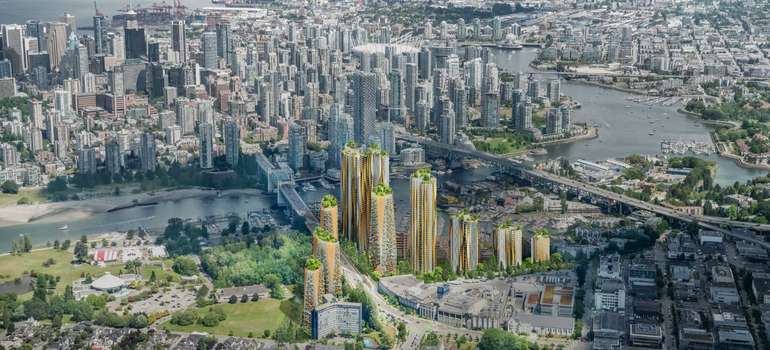
Indigenous land and infrastructure challenges:
The Liberal plan is more likely to involve careful consultation with Indigenous groups when developing land for housing, a crucial element that the Conservative plan doesn't seem to have sufficiently addressed.
Both parties can help improve land development opportunities for the state, private developers, and Indigenous groups, but they have very different approaches:
- The Liberal Party focuses on reconciliation, providing Indigenous communities with the resources and autonomy to manage land development, as seen with the Sen̓áḵw project. They aim to create a framework that supports Indigenous-led housing and economic projects.
- The Conservative Party is more focused on reducing red tape and incentivizing private and municipal development. While this could indirectly benefit Indigenous communities, it offers less direct support for Indigenous-led projects or specific land issues.
The outstanding Sen̓áḵw project in Vancouver BC illustrates the Liberal vision of empowering Indigenous communities to manage land development, but more targeted policies from both parties would be beneficial for ensuring equal access and opportunities for Indigenous land development that helps to alleviate Canada's housing crisis.
Making a new housing plan work for Canada
The new Liberal housing plan released in April 2025 presents a strong vision for tackling Canada’s housing crisis and has prompted much discussion, but it won’t succeed unless the general issues related to the Canadian construction industry are addressed. While prefab housing and modular homes offer exciting possibilities, they can’t succeed without workers trained in these methods or a harmonized building code that encourages innovation and consistency rather than stifles it.
To make this or any plan a reality, Federal government in Canada needs to prioritize a progressive approach to meaningful and results-focused reforms in Canadian home building at all levels, and ensure the right training programs are in place to build a skilled workforce for the future - including developing more opportunities for Canada's Indigenous communities.
If these steps aren’t taken, any plan could be yet more well-intentioned ideas that costs Canada and Canadians a lot of money without making the very real changes that are needed for building more good quality and affordable homes, quicker.
Under Canada’s constitution, provinces and territories have significant powers over areas like education and, importantly, building and construction codes. The Federal government has limited authority over construction standards, meaning provinces can adopt their own regulations to reflect local political influences. We would conjecture that this lack of Federal oversight to underpin the construction industry as a whole is the most significant barrier to progress for the construction industry in Canada.
Put simply, in our opinion the same consistency is needed in the Construction and Real Estate industry as afforded to the Finance and Insurance sector. If we had a cohesive plan for new-build construction in Canada that all major parties can agree on and pass financing for, then we have a good shot at improving the industry and the results they can achieve.
For as long as Construction regulations are localized and influenced by municipal, provincial, and changing Federal policies, the sector is going to be subject to market cycles, affordability issues, and politically-motivated government interventions that create the instability we're experiencing the fallout from today.
We don't yet know which party will emerge victorious on April 28th, but one thing is certain: Canada still has a long way to go in addressing its growing housing crisis. Political sound bites won't be enough to solve the country's construction challenges - what we need is proactive, sustained action and a change in the Federal framework in relation to the Canadian construction industry.
Authors: Robert J. Pierson - Ecohome Network - Mike Reynolds
See all posts by Robert J. Pierson
Now you know more about the Carney Liberal Government housing plan - BCH Build Canada Homes. Find more pages about Prefab houses, and how to find prefab home builders in your area in these pages:
Find more about green home construction in the Ecohome Green Building Guide pages and discover the benefits of a free Ecohome Network Membership here. |






























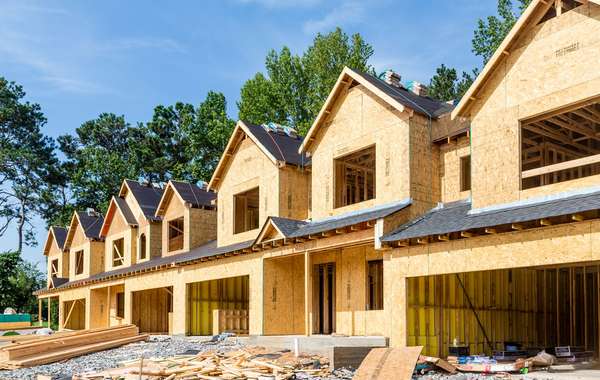


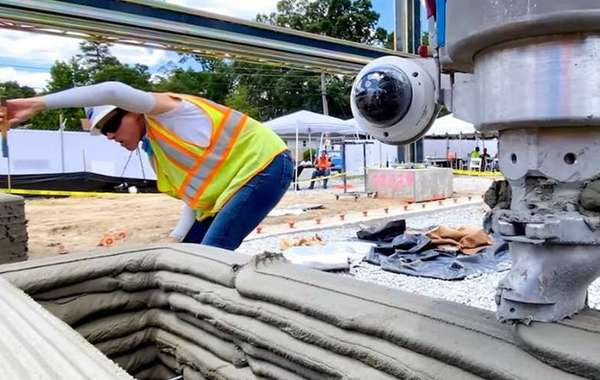
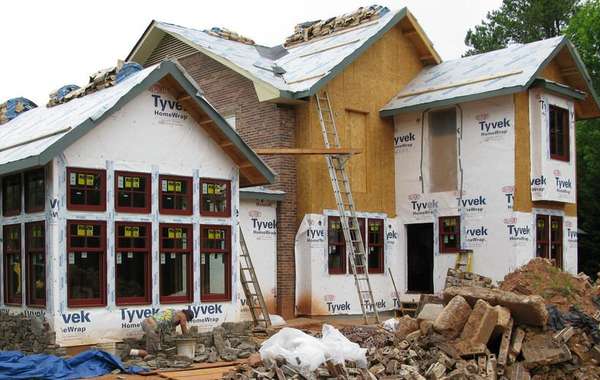
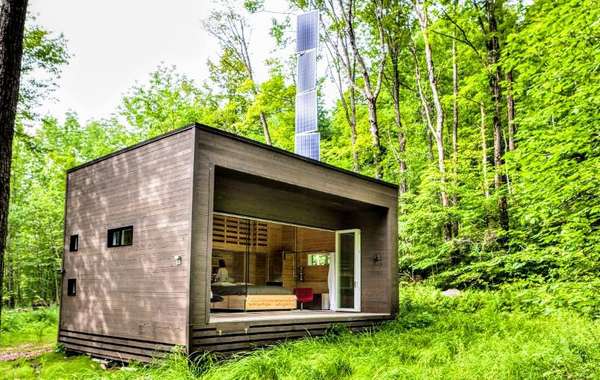
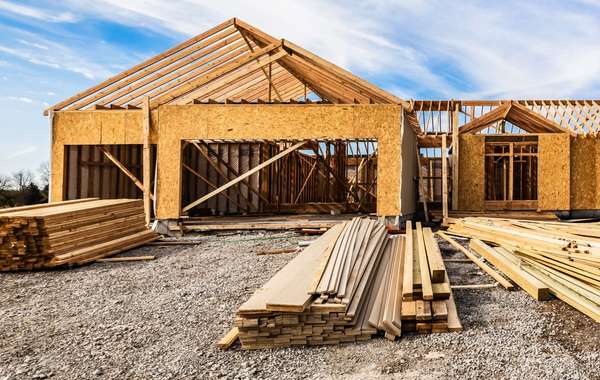


Comments (0)
Sign Up to Comment